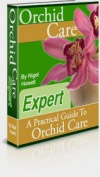Orchid flasks are used in order to keep seedlings in a sterile environment before being shipped out to growers all over the world and are a great way of growing your plant from seedlings to maturity.
Although the gestation period lasts around four years, after this you will have seedlings flowering for the first time, and the satisfaction of knowing that you have raised them yourself.
Flasks are available from a number of online distributors and nurseries globally; however, if you are growing for your own benefit, on a non-commercial basis, it is recommended that you purchase a ‘hobby-flask’.
These usually contain around 15 seedlings and will mean that your home won’t become swamped with more plants than you have room for. Your seedlings should be around 40-50 mm long before you attempt to de-flask and this should not be done in the winter time as the cold can damage your plant and ultimately prevent proper growth and development, you should also ensure that you do not de-flask too quickly after receiving your seedlings as they need time to acclimatise.
When your seedlings are big enough to remove, you should prepare them for potting by drying and hardening them for a number of days. Once this process is complete you will need to sterilize your work area, equipment and potting medium to prevent infection and disease in the plant, you should also make sure that you have purchased the right kind of potting medium for your particular genus of plant.
When removing your seedlings, you should gently shake the flask to loosen them and invert it, before washing off ager gel in a bowl of water at room temperature and leaving to dry on a sheet of clean newspaper for 30 minutes to an hour. Initially, it is recommended that you plant your seedlings together as they tend to grow better in a community pot.
Once this has been done, you will need to water well and allow to drain. At this stage you should be careful not to use fungicides on your plants as they can actually act as growth inhibitors and be highly detrimental to your plant’s development, instead, you should find a place in your home that can be utilized as a suitable growing environment; this place should be warm, sheltered with good levels of both humidity and light – the right growing conditions can act as as good a deterrent against infection and disease as any.
For the first few weeks following the initial planting you should ensure that you do not over-water your plant as this is the most common cause of death for seedlings; instead you should lightly mist your plants every day when the surface of your potting mix appears dry to encourage new root growth and prevent de-hydration.
Once your seedlings are well established in their pot and have grown onto their second lead or new larger leaf, you can move on to re-pot into small individual pots, taking care to follow appropriate methods of care determined by your particular species of plant.

